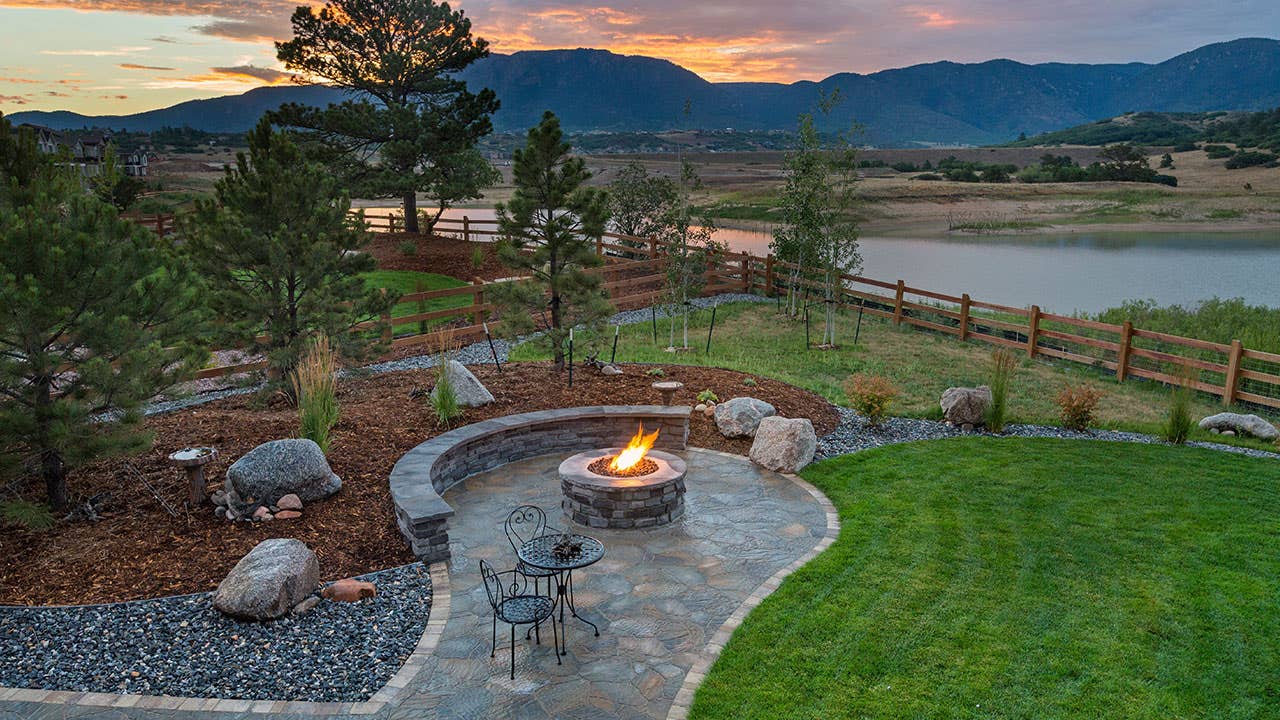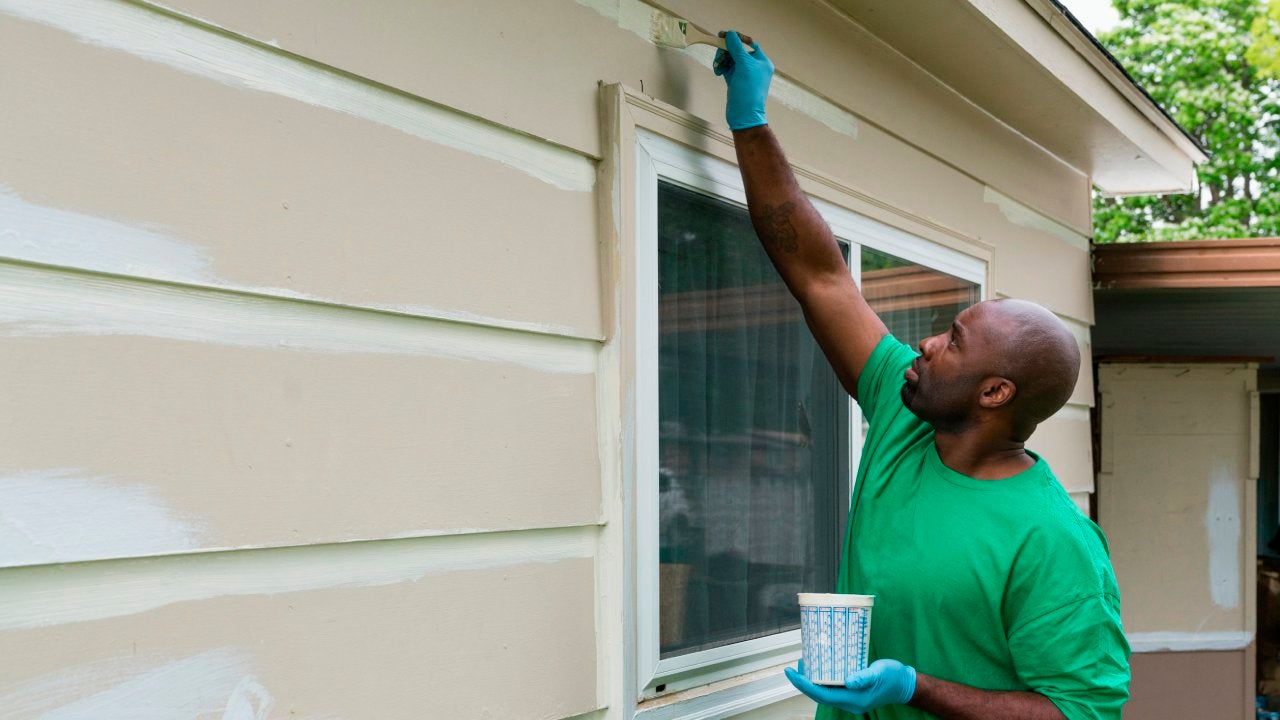5 things to know before you tackle an expensive outdoor renovation




Key takeaways
- Outdoor projects have a high return on investment, as they can increase curb appeal, the liveable space and the overall feel of a home.
- Pricier and bigger isn’t always better — basic lawn maintenance and maintaining things in good condition can go a long way.
- While it’s important to bear in mind neighbors’ facilities, consider your own lifestyle in deciding what projects to do.
- Home equity loans and HELOCs are affordable financing options for large, five-figure renovations.
With spring — the traditional kickoff to home-shopping season — looming, many a homeowner’s mind turns to sprucing up the exterior. In a recent survey of its network, real estate platform HomeLight found that 58 percent of agents consider outdoor living spaces as a top priority in today’s housing market and a major driver of value in buyers’ eyes.
Even if it’s only for their own enjoyment, new landscaping seems to be a priority for many homeowners. In 2023, over one-fifth (20.7 percent) of homeowners completed a landscaping renovation — it was among the most popular projects — and nearly one-third (32.4 percent) plan “major outdoor renovations” within the next five years, according to Angi’s annual “The State of Home Spending” report. “In general, landscaping projects always have a high ROI since they can increase curb appeal and the overall feel of the space,” says Mallory Micetich, a home expert at Angi.
Renovating your outdoor space can add a lot of value — not to mention quality of life — to your home, but it can also be costly. While it’s easy to go overboard, especially in these inflationary times, bigger isn’t always better. A little planning and research can go a long way in helping you get a good return on investment on your backyard makeover. Here are five key things to consider before you tackle an expensive outdoor renovation.
Here’s where popular outdoor projects fall in terms of average costs, according to Angi:
| Project | Typical cost |
|---|---|
| Pool installation | $39,000 – $70,000 |
| Deck construction | $4,200 to $11,900 |
| Patio installation | $2,000 to $5,800 |
| Landscaping and gardens | $100 to $6,000 |
| Fence installation | $1,750 to $4,500 |
What to consider before doing a backyard renovation
In general, “you might see a higher ROI on front yard projects since they will be the first thing potential buyers see, but having your backyard match the front keeps the ROI value high,” explains Micetich. Here are some other guidelines to keep in mind before undertaking a backyard makeover.
1. Simple lawn maintenance can go a long way
Want to get the best value for your dollar? Start with basic landscaping. “Making sure your lawn is healthy and your flower beds are neat and tidy with edging and fresh mulch are easy ways to make your yard look its best without breaking the bank,” says Lisa Schaumann Stryker, vice president, marketing & communications for National Association of Landscape Professionals. Other simple, cost-effective updates include trimming overgrown hedges, clearing away brush and dead plants, repairing sprinkler heads and making sure that everything looks fresh and new.
Basic yard maintenance is also one of the most frequently recommended outdoor projects recommended by Realtors prior to a home sale, according to the National Association of Realtors (NAR)’ “2023 Remodeling Impact Report: Outdoor Features” report. The least expensive project cited in the survey — standard lawn care service — had the highest cost recovery (217 percent), followed by landscape maintenance (104 percent).
2. Appraisers judge condition — not how expensive the materials are
If you plan to sell your home in the near future, fancy updates might end up costing you money you won’t recoup. Before you splurge on the most expensive materials, think about how much return you want on your investment, says Ran William, a Los Angeles-based real estate inspector and owner of OR Valuation Services.
Home appraisers look at what shape your home is in when they evaluate it, not necessarily the materials. A new pool with expensive glass tile will add the same amount of value as a new pool with less-costly porcelain tile. What matters is whether there are chips, cracks and overall wear and tear. People who put in quartz countertops — a premium material that can cost up to 40 percent more than granite, for example — are probably not going to get their money back, William says.
“If you put in a brick patio rather than concrete, I’m not going to give you more credit for brick, even though it’s much more expensive — it’s the condition I’m judging,” William says.
Make sure you price compare materials so you get the most mileage out of every dollar you put into your outdoor projects. From an investment viewpoint, the pricier product is only worth it if it lasts longer or requires less repair.
3. Be aware of what are the neighbors doing
Comps play an important part in how homes are valued, and sometimes you have to do what everyone else is doing if you want to eventually sell your home. Homeowners might have to invest in certain upgrades to meet neighborhood norms; otherwise the property will get devalued.
“Let’s say the cost of the pool is $68,000 with hardscape. Although this is a lot of money, in high-end neighborhoods where everyone has a pool, the property will sell for much less because it doesn’t have one,” William says. “Sometimes it’s not just the cost of the improvement, but it should be on par with what your neighbors have.”
But while you should keep up with the Joneses, you don’t necessarily have to surpass them, going overboard with the most expensive materials (and features). Extravagant updates don’t always provide the best return on investment. Buyers want a place to be up-to-date, but not necessarily luxe.
4. Think about your lifestyle
Homeowners should think about the big picture in deciding how they want to use their yard, counsels Schaumann Stryker. “They can plan different areas for different things.” Think: grassy areas on which kids and dogs can play, a space for entertaining, an outdoor home office, and shaded or screened zones with plantings for privacy. All these are possibilities.
“Adding a deck or patio is a core function of outdoor living spaces and should be the first consideration when adding to your outdoor space,” she says. While not every homebuyer will want a pool, such multi-use features are always useful, she adds. Landscaping pros have seen an uptick in demand for new patios in particular, the NAR outdoor remodeling report notes.
5. Consider different financing options
Although some outdoor projects can be DIY ventures, bigger jobs might require financing. For homeowners who’ve built up a strong stake in their property, a home equity loan or a home equity line of credit (HELOC) are two low-cost options that might fit their needs. Equity-based loans are cheaper than credit cards, which have an average interest rate around 20.75 percent (as of February, 2024). Meanwhile, home equity loan rates average 8.92 percent and HELOCs average 9.09 percent. These loans are often less expensive than personal loans, as well.
“Many people are not familiar with home equity lending,” says Jon Giles, senior vice president and head of residential lending strategy and support at TD Bank in Charlotte, NC. “While rates have increased, home equity remains one of the most affordable ways to borrow money. Your average home remodel is about $45,000, so this is where a home equity loan or HELOC can help.”
The benefit of a HELOC for home improvement projects is that you only owe what you use, which is beneficial if you aren’t sure how much the final amount for a project will be. Equity-based loans are also tax-deductible if you use them for home improvement projects (and you itemize deductions).
When you apply for home equity loan or HELOC, banks look at three main things, explains Giles:
- the loan-to-value (LTV) ratio on the home
- the applicant(s) credit score
- the applicant(s) ability-to-repay or debt-to-income (DTI) ratio
Remember, though, this is additional debt. For people who are struggling to make their mortgage payments, taking on home equity loans can be risky. Because they use your house as collateral, you can end up losing it if you fail to make payments.
Popular backyard ideas
Here’s a quick look at trending backyard renovations:
- Pool: Pools can be a great addition to make a backyard more fun, but they also come with liabilities some buyers don’t want to take on. Consider both the pros and cons if you are thinking of adding a pool to your property. Installing a pool may impact property value in different markets, but it can increase value by as much as 7 percent.
- Landscaping: Fresh landscaping with features, such as a new walkway, flower bed, shrubs, and even standard lawn care maintenance can increase property value, too. Landscaping projects and lawn care maintenance can have a return on investment of up to 217 percent, according to NAR.
- Deck: Installing or upgrading a deck offers an ROI of up to 66 percent, says Micetich. That translates into an additional $8,500 to $9,300 in resale value, according to Remodeling’s latest “Cost vs. Value” report. Wood decks have a better return, as they’re cheaper to build, but they do require more upkeep.
- Patio: Adding a patio is a project with a high cost recovery — 95 percent, according to the NAR “Outdoor Features” report. Depending on the style of your patio and the local market, you may even be able to add more value to your property.
- Fire Feature: A fire feature can be anything from a simple fire pit to an extravagant outdoor stone fireplace. This amenity was the number one outdoor upgrade homebuyers wanted to see in 2021, according to 54 percent of agents HomeLight surveyed — and three years later, those pits are still on fire, with a compound annual growth rate of 9.5 percent.
- Outdoor Kitchen: Many homebuyers want to see an outdoor kitchen, where you can cook and entertain. Going way beyond the basic barbecue, such facilities include a sink, a fridge, a grill and a few cabinets. A $15,000 outdoor kitchen can recoup its entire cost at resale, according to the NAR‘s “Outdoor Features” report.
You may also like

What is PITI? A complete guide

Which home improvements add the most value?

8 things to do immediately after buying a house


